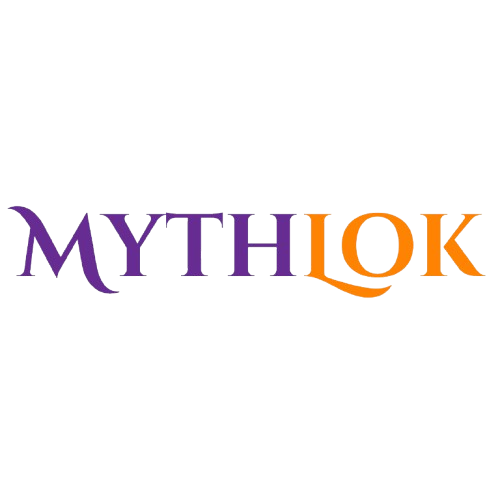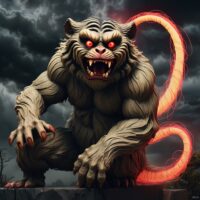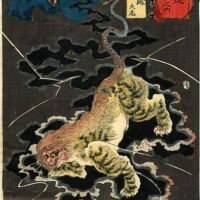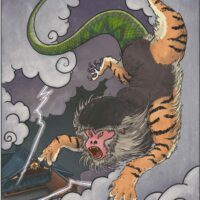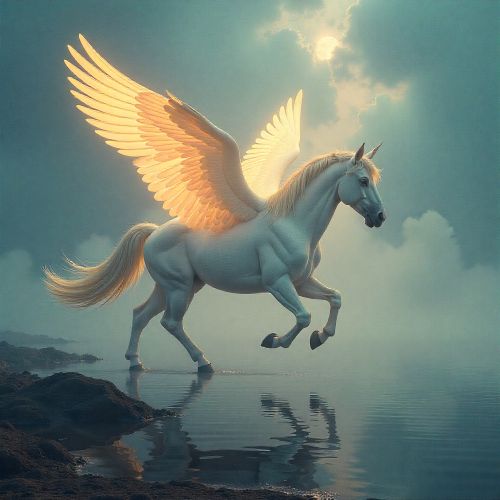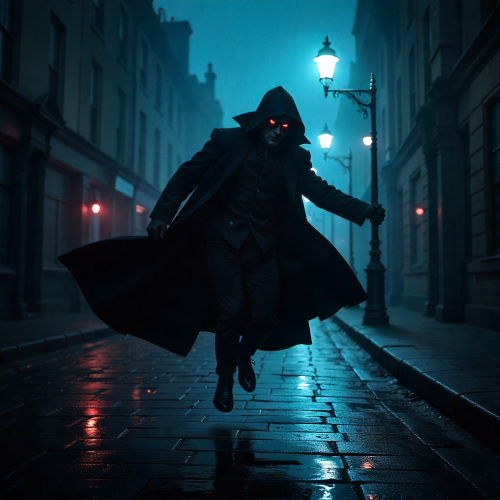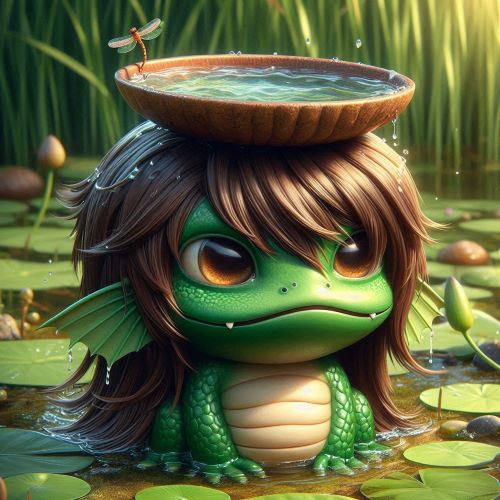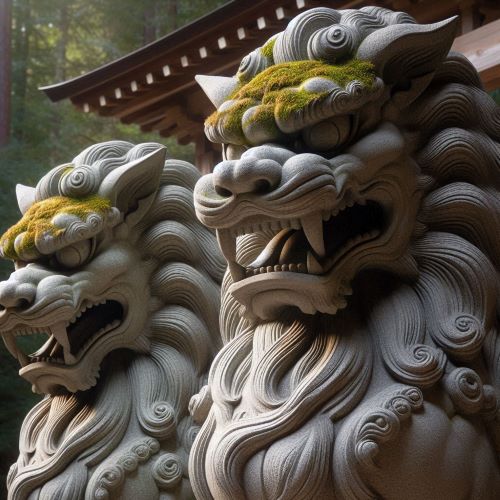Nue : The Japanese Chimera
Listen
At a glance
| Description | |
|---|---|
| Origin | Japanese Mythology |
| Classification | Hybrids |
| Family Members | N/A |
| Region | Japan |
| Associated With | Shapeshifting, Ill Omen, Bad Luck |
Nue
Introduction
The Nue, a creature deeply embedded in Japanese mythology, is known for its shadowy and ominous presence. It embodies both fascination and fear due to its monstrous form and association with misfortune. In the diverse realm of Japanese folklore, where fantastical and eerie beings abound, the Nue stands as a singularly mysterious entity. Revered for its shapeshifting prowess and dreaded for its malevolent nature, the Nue has left an enduring impression on Japanese culture, continuing to intrigue and captivate imaginations. With a hybrid appearance derived from multiple animals, the Nue, or 鵺, remains a compelling and enigmatic figure in Japanese folklore through the ages.
Physical Traits
The Nue’s physical description varies widely among different sources, contributing to its enigmatic nature. A prominent depiction can be found in The Tale of the Heike, an epic chronicling Japan’s warring clans, where the Nue is portrayed as a monstrous chimera. Its head resembles a monkey, its body a plump tanuki (Japanese raccoon dog), its legs powerful like those of a tiger, and its tail akin to a menacing serpent. This amalgamation of fearsome attributes underscores the Nue’s wild and destructive potential. In earlier accounts, however, the Nue was described differently. Its name, derived from kanji meaning “night” and “bird,” suggests a nocturnal avian origin. Both the Kojiki (Record of Ancient Matters) and the Man’yōshū (Collection of Ten Thousand Leaves), ancient texts of Japanese lore, portray the Nue as a bird resembling the White’s thrush, noted for its eerie calls during the night. This ambiguity surrounding its form enhances the Nue’s mystique, blurring the boundaries between natural and supernatural realms.
Family
In Japanese mythology, the Nue is closely linked to Raijin, the thunder god, often regarded as one of his servants or manifestations. This association connects the Nue to storms and thunder, reinforcing its reputation as a bringer of disaster and disorder. Despite its ties to Raijin, the Nue is depicted as a solitary figure, lurking in shadows and instilling fear in those who encounter it. Unlike many yokai that fit into established hierarchies or have documented origins, the Nue stands alone, its species and specific origin shrouded in mystery. Emerging from ancient texts like the Kojiki (712 CE) and the Heian-period encyclopedia Wamyo Ruijusho (938 CE), it remains an enigmatic entity.
Some interpretations suggest it could resemble a bird such as the green pheasant or the eerie cries of the scaly thrush, yet its true nature remains elusive. Scholars have drawn comparisons between the Nue and other yokai like the nine-tailed fox (kitsune), noting thematic similarities in their association with misfortune and their propensity to target figures of authority. Additionally, the Nue’s monstrous form bears a vague resemblance to the Baku, a dream-eating yokai known for its chimeric appearance. Whether these parallels indicate deeper mythological connections or mere coincidences continues to invite speculation and interpretation.
Other names
In different regions of Japan, the Nue is recognized by various names aside from its most common designation. Referred to as “Kumo” (cloud) in some areas, it is linked to ominous storm clouds that herald its arrival. Other appellations include “Yashagasumi” (demon mist) and “Kogaku” (tiger-monkey), each highlighting different facets of its monstrous form. These alternative names offer insights into the diverse interpretations of the Nue across Japan. The Nue is sometimes likened to a Japanese Chimera due to its amalgamated features. Its kanji characters signify “night” and “bird,” emphasizing its nocturnal habits. Throughout history, the Nue has been known by various names and epithets, reflecting its multifaceted role in different narratives. In certain texts, it is referred to as “Nue no Tori,” stressing its avian traits and its capacity to take flight in darkness. This alternate name underscores the Nue’s elusive nature and its tendency to appear unexpectedly.
Powers and Abilities
The Nue is renowned as a harbinger of misfortune, believed to bring illness, famine, and natural calamities merely by its presence. Legends recount instances where the Nue was blamed for sudden, unexplained illnesses that afflicted royalty and nobility, including an Emperor’s mysterious ailment in The Tale of the Heike, casting a dark shadow over the Imperial Palace. Possessing formidable abilities, the Nue commands the weather, conjuring storms and unleashing devastating lightning strikes. Its monstrous physique hints at immense strength and agility, with some accounts attributing shapeshifting capabilities to further enhance its unpredictability. Among its arsenal, the Nue’s chilling cry stands out—a haunting sound likened to a screeching owl or the mournful wail of a banshee, instilling fear and foreboding in all who hear it. This eerie cry serves as a grim warning of impending disaster, solidifying the Nue’s reputation as a bringer of misfortune and dread.
Modern Day Influence
The ancient origins of the Nue exert a lasting influence on modern-day Japan, where its legend continues to inspire various forms of artistic expression and cultural references. Artists and writers frequently draw upon the Nue’s distinctive appearance and ominous reputation to craft compelling narratives and visual depictions. As a symbol of supernatural forces and unforeseen occurrences, the Nue resonates with contemporary audiences, serving as a timeless reminder of the enigmas that transcend human comprehension.
In modern Japanese popular culture, the Nue maintains a prominent presence across video games, anime, and manga, often portrayed in its monstrous form and associated with misfortune. However, there are also reinterpretations that present the Nue in a more nuanced manner. Some depictions depict it as a guardian spirit, offering protection to those who can appease it. This evolving portrayal reflects a deeper, more complex understanding of yokai in modern Japan, where these entities are viewed not only as agents of calamity but also as beings capable of both benevolence and malevolence.
Related Images
Frequently Asked Questions
What is lorem Ipsum?
I am text block. Click edit button to change this text. Lorem ipsum dolor sit amet, consectetur adipiscing elit. Ut elit tellus, luctus nec ullamcorper mattis, pulvinar dapibus leo.
What is lorem Ipsum?
I am text block. Click edit button to change this text. Lorem ipsum dolor sit amet, consectetur adipiscing elit. Ut elit tellus, luctus nec ullamcorper mattis, pulvinar dapibus leo.
What is lorem Ipsum?
I am text block. Click edit button to change this text. Lorem ipsum dolor sit amet, consectetur adipiscing elit. Ut elit tellus, luctus nec ullamcorper mattis, pulvinar dapibus leo.
What is lorem Ipsum?
I am text block. Click edit button to change this text. Lorem ipsum dolor sit amet, consectetur adipiscing elit. Ut elit tellus, luctus nec ullamcorper mattis, pulvinar dapibus leo.
What is lorem Ipsum?
I am text block. Click edit button to change this text. Lorem ipsum dolor sit amet, consectetur adipiscing elit. Ut elit tellus, luctus nec ullamcorper mattis, pulvinar dapibus leo.

